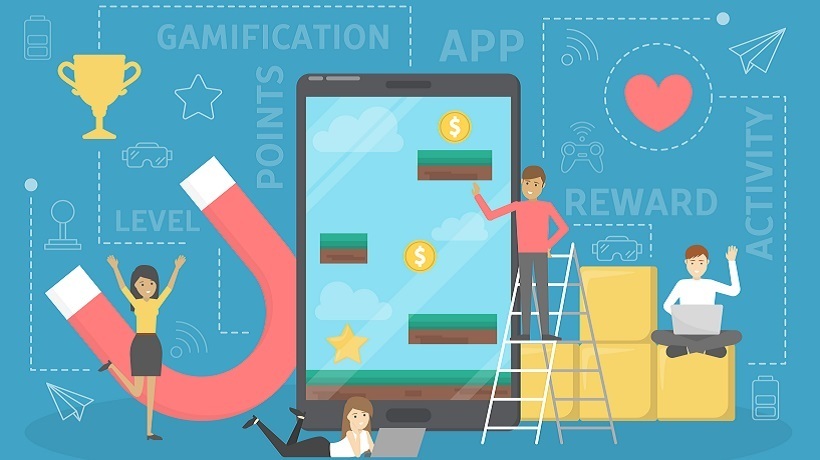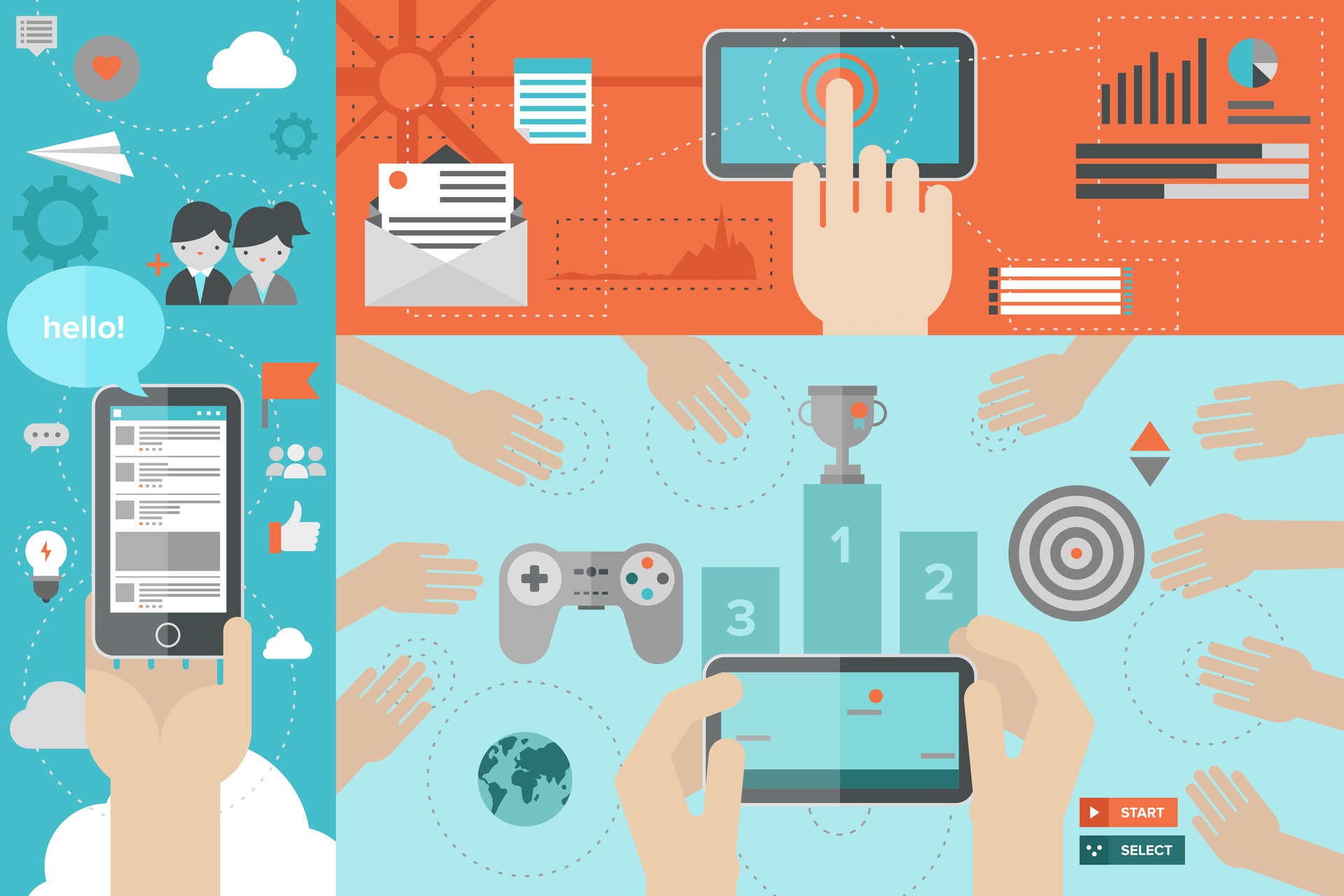The Advantages Of Gamification In eLearning
Gamified eLearning techniques are gaining popularity in the market for a few reasons, the most important one being that they engage learners and make them more likely to complete a course. Gamification is not just about adding points and badges to a website or app. It is about using game design principles as a way to make learning more engaging, interactive, and fun for learners. In this article, I will explore the different ways that games are being used in education, and how they can be used to improve student retention rates.
Gamification in education or game-based learning is becoming a popular method for engaging learners. In spite of the growing popularity, it is still unclear to many educators and administrators what exactly game-based learning is. In this article, I will explain how games can be used in education and how they can help improve student retention rates.
What Is Gamification?
It has been demonstrated that when given the choice between a pleasant task that offers an appealing reward and a traditional task that offers nothing appealing, the human being prefers the most pleasant task. This offers an accessible challenge in exchange for a reward that they consider useful for their life. In this case, excitement arises from the feeling that the learner will obtain something on their own merit: they want to experience it, which awakens the feeling that they are capable of achieving new goals and not being concerned about failing because it is a game. Because it is a playful proposal that is far from formalism, this approach helps to motivate the person to experience the much-feared failure with greater tolerance.
In this digital age, where attention and interest are difficult to capture, the traditional one-way approach of transmitting information from teacher to student is already a bit obsolete. It turns out that when tasks are presented as approachable and pleasant challenges, something familiar and warm emerges, hearkening back to the most universal thing that exists: the game. There is an emotional motivation, and it is these that play a crucial role in capturing the human being's attention and interest.
Gamification in eLearning refers to the use of game-based elements, such as points, badges, and rewards, to engage and motivate learners in an online learning environment. The goal of gamification is to make the learning process more enjoyable and interactive, which can help improve retention and understanding of course material.
Gamification can be used in a variety of eLearning contexts, including classroom-based courses, corporate training programs, and self-guided learning platforms. Some common examples of gamification in eLearning include quizzes and puzzles, interactive simulations, and progress tracking systems. By gamifying their courses, educators, and trainers can create more engaging and effective learning experiences for their students. When we integrate the game in an optimal way in education, excellent results can be obtained to ensure learner retention the new information that is taught.
Benefits Of Gamifying Your eLearning For Improved Classroom Management
Even if the benefits of gamification in eLearning have been established in the past, many people are still skeptical about using gamification for educational purposes because they believe that games and gamification are only for entertainment and leisure. It is impossible to deny how much fun it is to play a game, but we guarantee that the primary use in the educational context goes far beyond fun. Let's dive deeper into the additional benefits that the methodology provides for both students and teachers:
1. Increases Student Interest
Paying attention in a class or focusing on a text can be difficult for students, especially when they spend all day exposed to stimuli from cell phones, tablets, and computers. Gamification in education serves, then, to increase interest in the content and activities that have to be carried out. In the end, the mechanism of the game generates a lighter and more interactive learning, making people learn new things or develop skills without realizing it, and without effort.
2. More Commitment In Class
Teachers who work with distance learning are always looking for new strategies to make their classes more interesting. As classes take place in a rapidly changing virtual environment, the way of transmitting knowledge also needs to change and adapt to trends. The use of gamification in the educational area facilitates student engagement, since it uses language that is familiar and attractive to most of them, especially if the audience is young. In addition, teachers can resort to resources, such as scores, rankings, prizes, and differentiated scenarios, so that students really get involved in what is being proposed. But in addition to online classes, the methodology can also be applied in the traditional classroom environment. In several institutions, the use of games is already a common practice, but normally the instruments used are pedagogical board games or group dynamics. The proposal of gamification in education is to use technological resources to get closer to students, that is, to use something that is part of their routines to enhance learning. You only need access to the internet and the required mobile devices to perform these tasks in face-to-face classes.
3. Awaken The Students' Curiosity
Maintaining the curiosity of your students is one of the biggest concerns of those who work as a teacher. After all, nobody seeks new knowledge or experiences if they do not feel motivated. You must have already noticed that everything that is new attracts attention, right? In the educational environment, even though things are already changing, there are still many rules and standards that must be followed. For this reason, the students end up unmotivated, since they already know everything that is going to happen during the class. When the teacher brings an innovative and creative proposal, it arouses the curiosity of the students, especially when the resource used is related to something they like and identify with.
4. Stimulates Healthy Competition
Encouraging student competition does not imply pitting them against one another to see who is the best. Gamification encourages healthy competition, which serves as an incentive to constantly improve and push themselves beyond their limits. This occurs because the games allow the student to observe their performance in real time, identifying their strengths and visualizing what they need to improve in practice. The use of prizes, rankings, and different levels serve as allies in motivating students to study more and devote themselves fully to the activities. When working with eLearning, you understand how important it is to use tools that encourage this, because the teaching and learning process in the virtual environment occurs, for the most part, individually.
5. Overcome Objections
Many students associate learning with something dull that must be done only out of obligation. The teacher uses gamification to break down this barrier and demonstrate that learning can be enjoyable. Finally, in the traditional classroom format, the student performs the majority of the activities solely to learn new content. It can be difficult to find motivation to pay attention, if the issue is not personally relevant. Gamification in education allows students to learn while receiving a variety of other stimuli, which aids in knowledge retention and dispels common misconceptions about teaching methods.
6. Useful For All Ages
One of the most significant benefits of gamification is the ability to use it with a variety of audiences. It is possible to use games to teach students of all ages, if you know how to adapt the language and to use the appropriate resources. Typically, the younger generation interacts with technology more frequently and enjoys playing other games in their spare time. With these students, the teacher can experiment with more complex activities that necessitate greater proficiency with technological instruments. If your audience is older or has less experience with technology, simpler games are preferable. Keep in mind that the goal of gamification in education is to make teaching more dynamic. If you propose extremely complicated activities, you risk creating objections, backlash, and loss of interest.
7. Helps Increase Students' Attention Span
You must have heard that students quickly lose concentration and become increasingly inattentive. This complaint does not refer only to people who are in regular education, but also to those who take free or specialized courses. The evolution of technology brought many benefits, but it has also created environments full of distractions and constant stimuli. This makes it difficult for people to stay focused on a single activity for long. Therefore, those who work in education need to find ways not only to get their students' attention, but also to keep it. Gamification is one of the strategies that can be used to achieve this goal. By including the games in your classes, you can divide the classes into stages or levels. Thus, students will pay more attention and participation in a single activity will be prolonged.
eLearning Gamification Techniques For Improved Learning
The goal of gamification is to make the learning process more fun and engaging for the learner so that they will want to continue. Here are a few eLearning gamification techniques that can be used to improve learning:
- Quizzes and puzzles
Incorporating quizzes and puzzles into your eLearning course can help students test their knowledge and apply what they have learned. - Badges and rewards
Using badges and rewards to recognize students' achievements can help to motivate them to continue learning and complete tasks. - Leaderboards
Displaying leaderboards can create a sense of competition among students and encourage them to perform their best. - Progress tracking
Allowing students to track their progress through the course can help them to stay motivated and to see the progress they are making. - Interactive elements
Incorporating interactive elements, such as videos, simulations, and games, can make the learning experience more engaging and fun. - Collaborative activities
Encouraging students to work together on group projects or assignments can foster teamwork and collaboration.
By using these techniques, you can gamify your eLearning course and create a more engaging and effective learning experience for your students. We combine these gamification techniques together with the VARK (visual, auditory, read/write, and kinesthetic) learning style. This allows us to create the most engaging learning modules, that are perfect to keep the attention of any learner.
Conclusion
Various gamification techniques have been proven to be successful in improving learning outcomes and retention rates. This way, learners have an opportunity to learn while having fun, which makes their experience more memorable and engaging.










